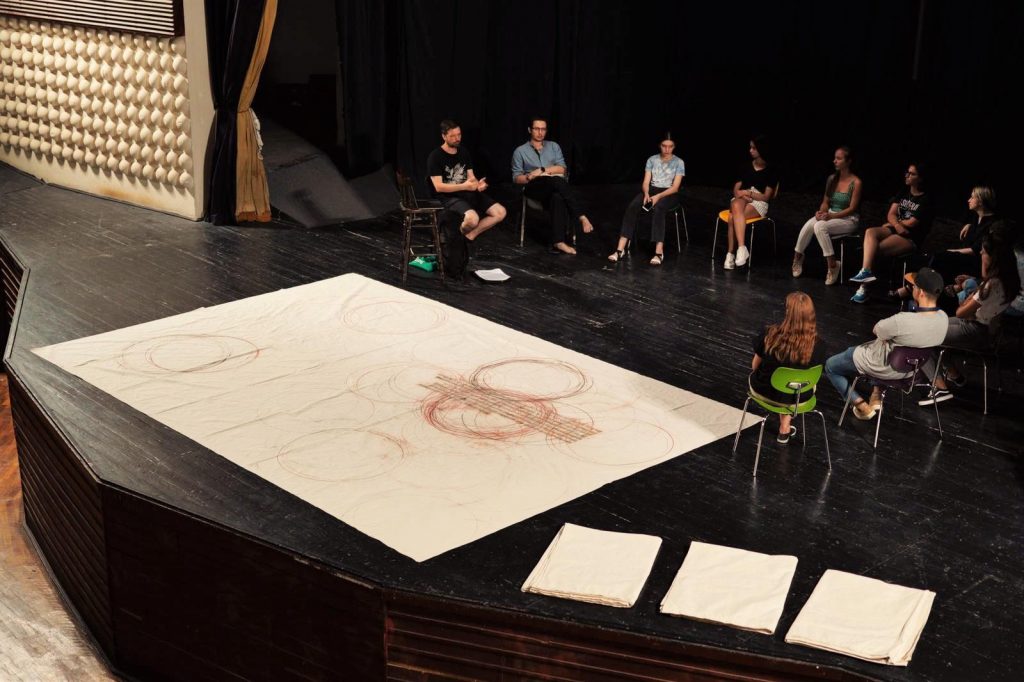The artists together with the theatre director Mihai Lukács have explored for three days along with a group of teenagers the relation between social networks, data sharing and the safety technologies. What are the implications of accepting the Terms and Conditions in any digital service, what are the implications in terms of individual sovereignty?
The starting point of the workshop is a fragment from The Origins of Totalitarianism by Hannah Arendt in 1951. Arendt describes a simple graphic system used by the secret police of the Tsarist autocracy, Okhrana Guard Department (active between 1881 and 1917), which had the purpose of socially cartographing every individual by studying the close relationships, the contacts and the interactions. The density of the information can drift from the cartographic representation of social interactions. Arendt suggests that only technical boundaries have limited the scale of this operation and reaching the supreme goal of a totalitarian police. For the digital era, what Arendt predicted about the social cartography extended to the point of a control tool, sounds like a prophecy.
Mona Vătămanu (b. 1968) & Florin Tudor (b. 1974) have been working together since 2000. Using multiple techniques (film, photography, painting, performance, site-specific interventions), the artistic duo identifies and highlights common traits of post-communist space, focusing on themes such as the flow of capital and the power relations in the global economy, to resignifying social utopia. Exhibitions (selection): Art Encounters Biennial, Timișoara (2019); Universe of Relations, Zarya Center for Contemporary Art, Vladivostok (2018); Life – A User’s Manual, Art Encounters Biennial, Timișoara (2017); Prăpădenia Pământului, Salonul de proiecte, Bucharest (2016, solo); Flying Utopia, tranzit.sk/Bratislava (2015, solo); All Men Become Sisters, Muzeum Sztuki ms2, Łódź (2015); 46°19′41″N 23°12′44″E Geamăna, Andreas Huber Gallery, Vienna (2014, solo); Social Factory, 10th Shanghai Biennale, Power Station of Art, Shanghai (2014).

